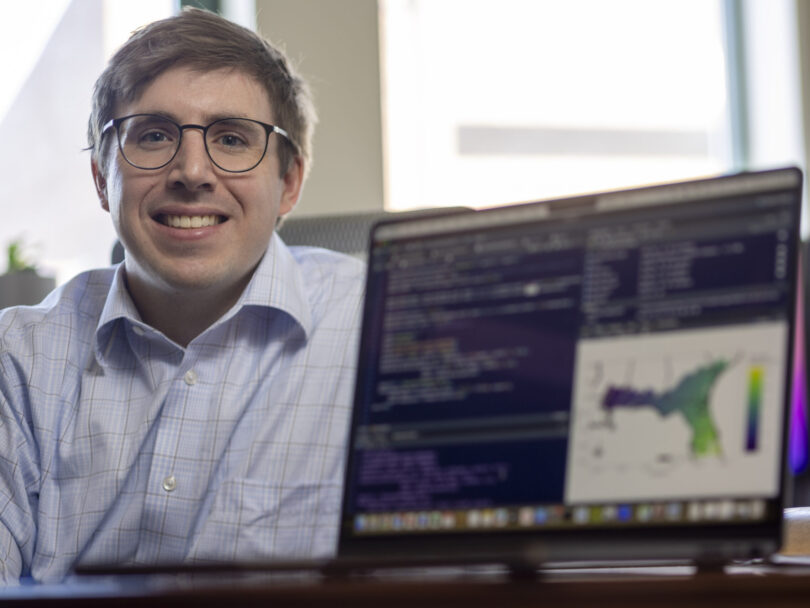While AI provides tools to advance data analysis, human oversight and insight remain necessary parts of the equation.
Stephen Kinane MS ’14, PhD ’20, for example, taught an algorithm to recognize a pine sapling in an image of a forest. To properly program an algorithm, researchers teach AI to understand different backgrounds and lighting patterns, detailing what differentiates a sapling from other vegetation and the forest floor, and more.
“We can look at something and know it’s a tree. But in AI, it has to understand that a tree is still a tree whether it’s in sand or a clay soil,” says Kinane, assistant professor of silviculture, or the study and cultivation of trees, in the Warnell School of Forestry & Natural Resources.
This meticulous work is an investment on the front end of a process that can significantly increase efficiency as Kinane and his colleagues study reforestation and the factors impacting forest growth patterns year over year.
We can look at something and know it’s a tree. But in AI, it has to understand that a tree is still a tree whether it’s in sand or a clay soil,” Stephane Kinane, assistant professor in silviculture
Since the 1970s, Warnell’s Plantation Management Research Cooperative has collected data from forests across the Southeast. Even today, a field team travels miles and miles across the region, taking extensive notes and collecting samples to understand growth patterns. AI can utilize more than 40 years of data collected by the cooperative to further expand our understanding of how factors influence each other and interconnect.
“We’re not removing the forester from the forest,” says Bronson Bullock, director of the cooperative. “We’ve always been data driven and focused on utilizing the best and most current research methods, from statistical models to machine learning and AI techniques.”
This investment in data collection and AI application can have short-term benefits, including increased efficiency, but it also moves Warnell toward long-term goals. One example is the ongoing initiative to study the combined impacts of improved forest management techniques with planting seedlings selected for improved growth rates. This project will include data collection over the next several decades, but AI can provide growth estimations even sooner, guiding reforestation efforts in the future.
“We will be able to look at early growth trajectories from years one, two, and so on to make extrapolations over the life of the forest,” Bullock says. “We can look at year 30 or beyond. “








